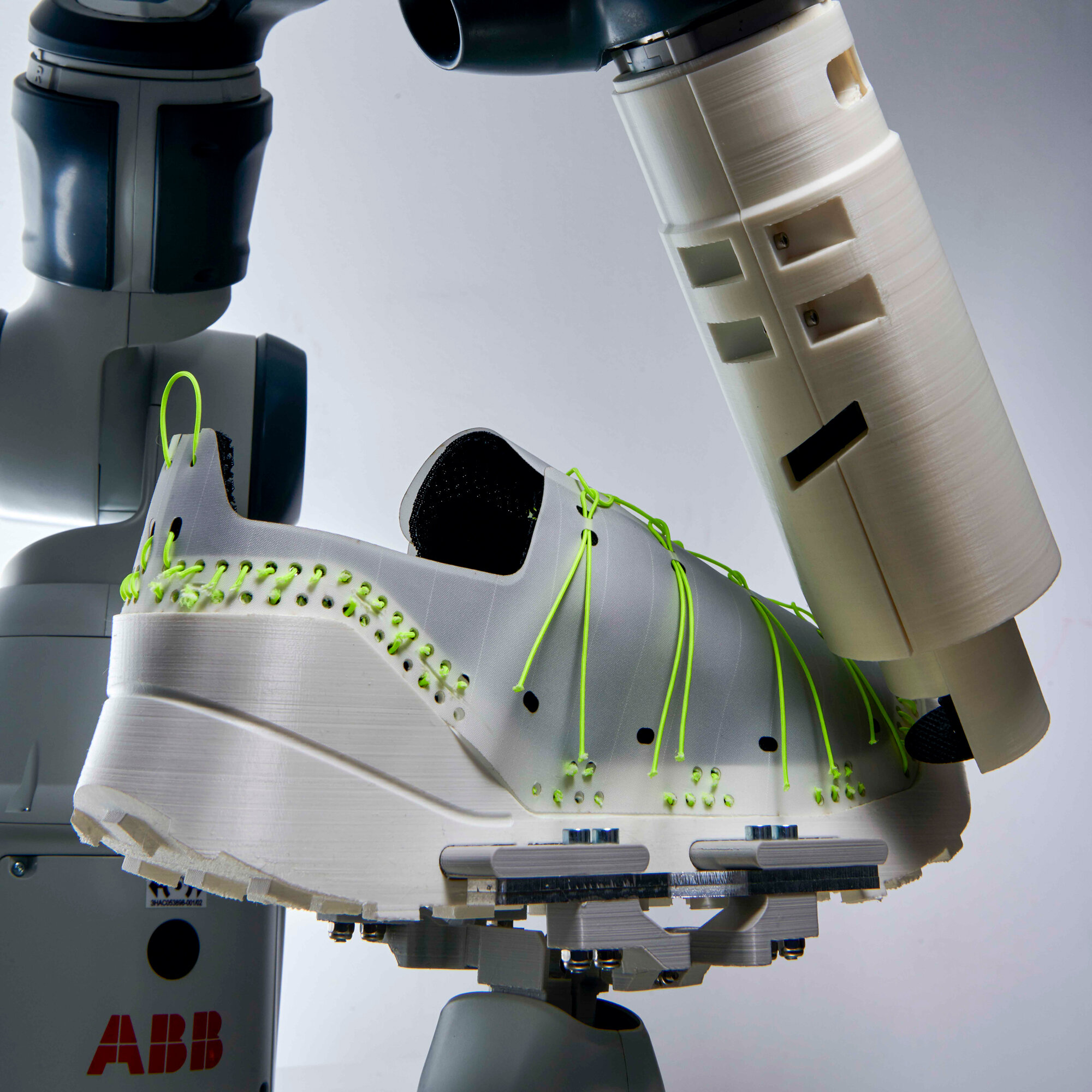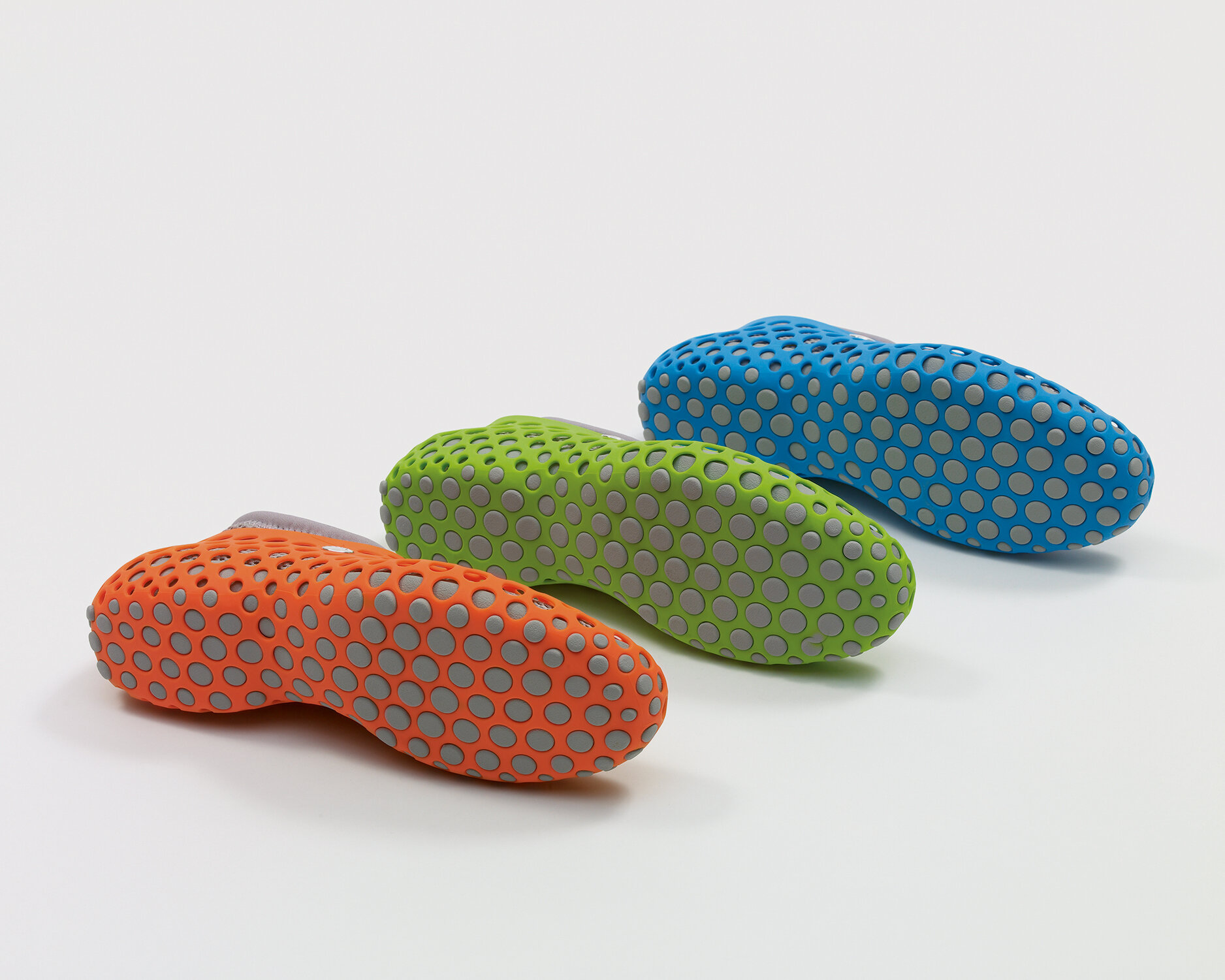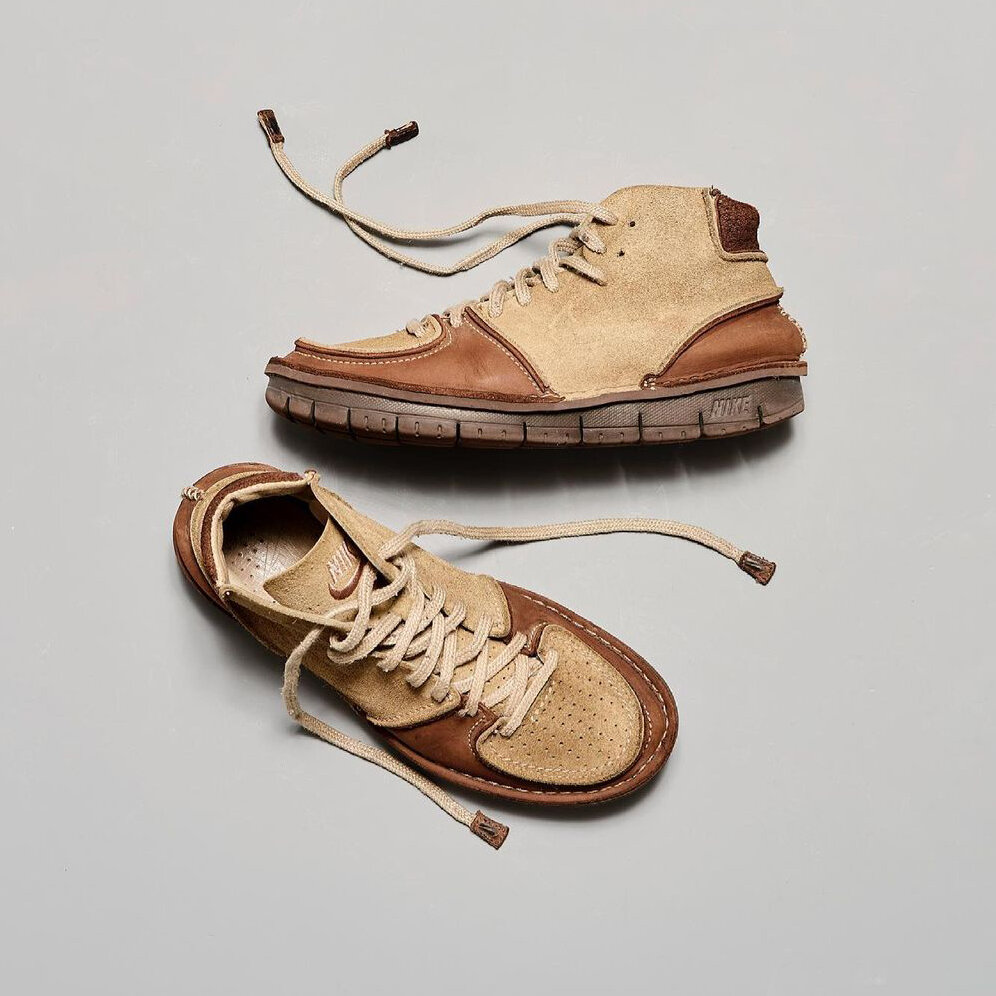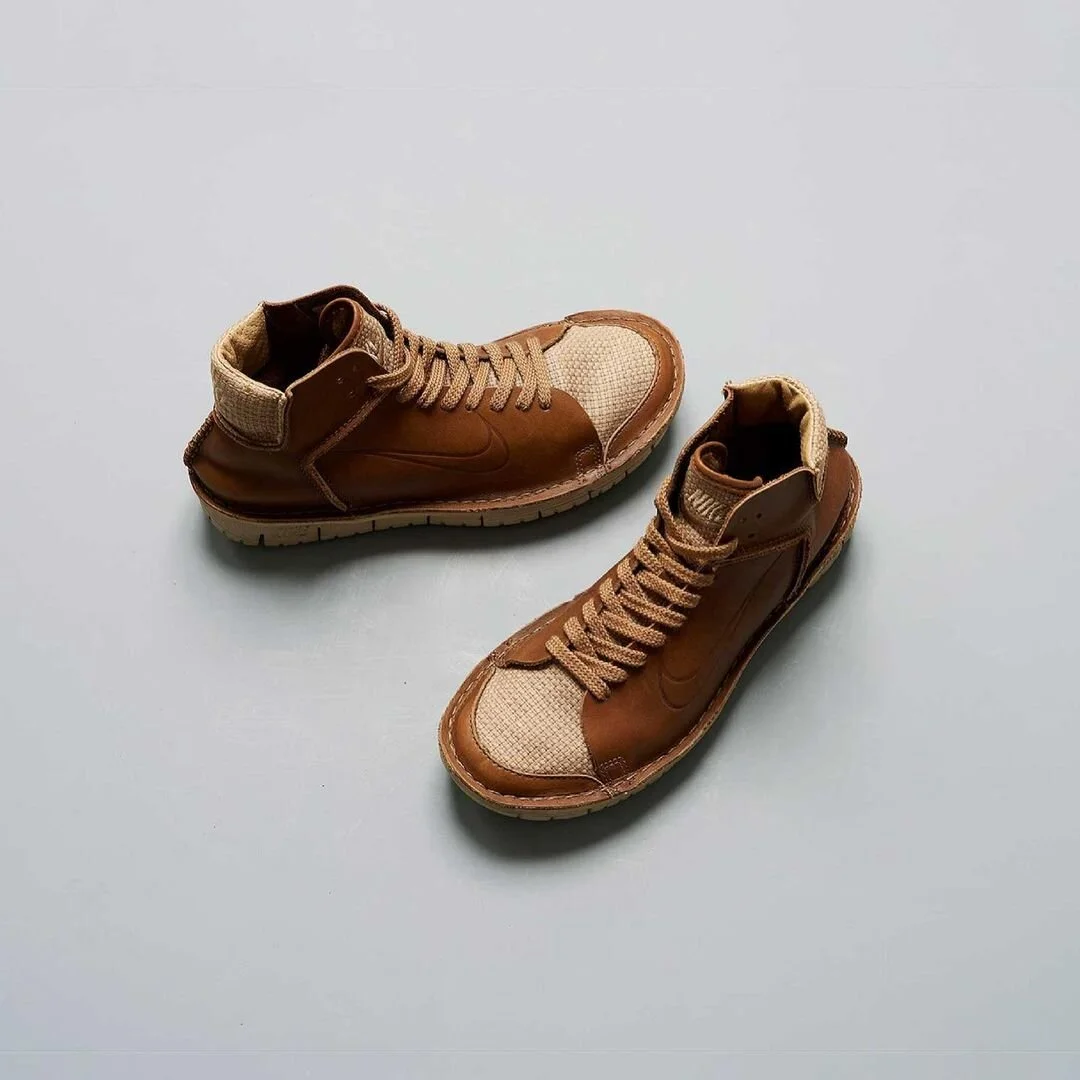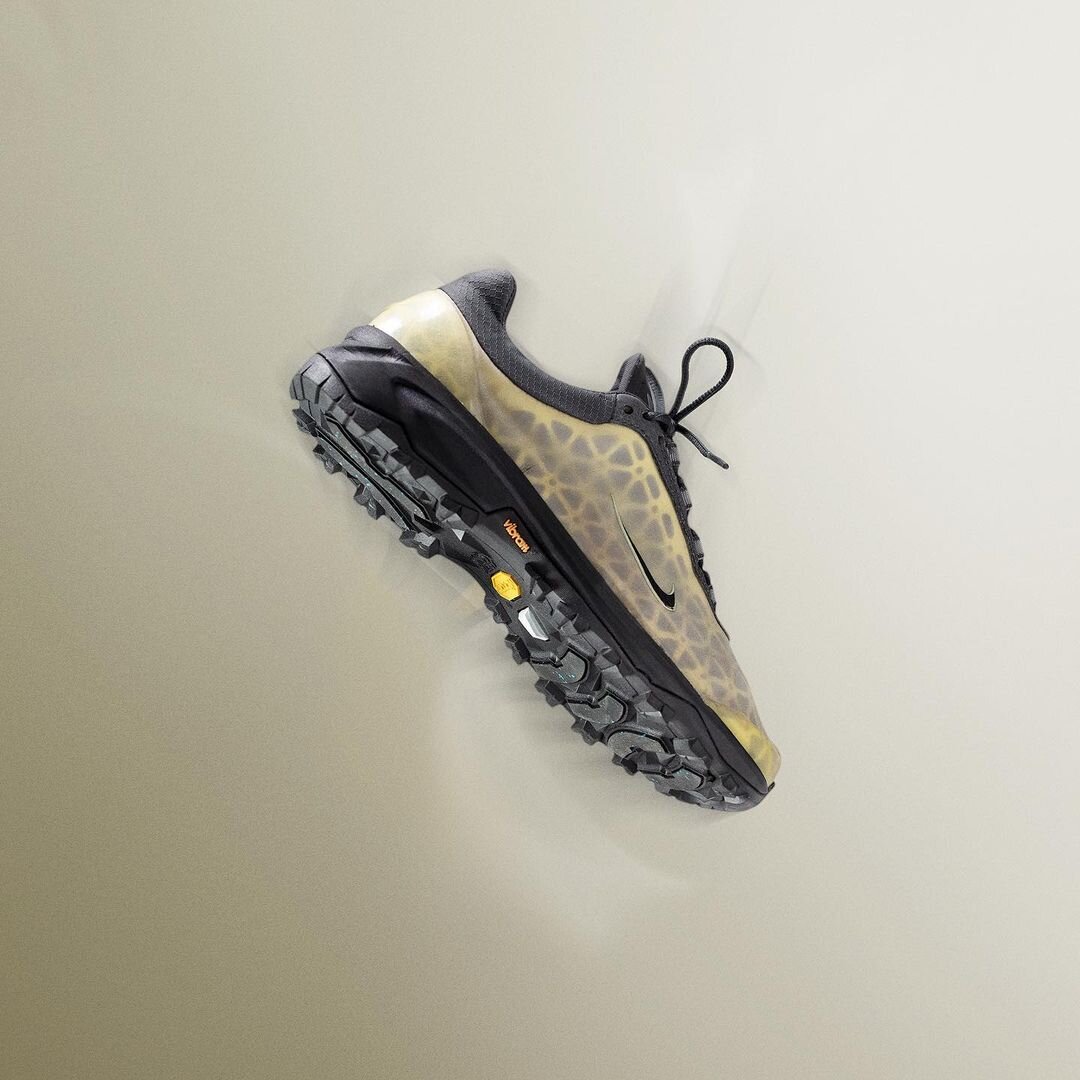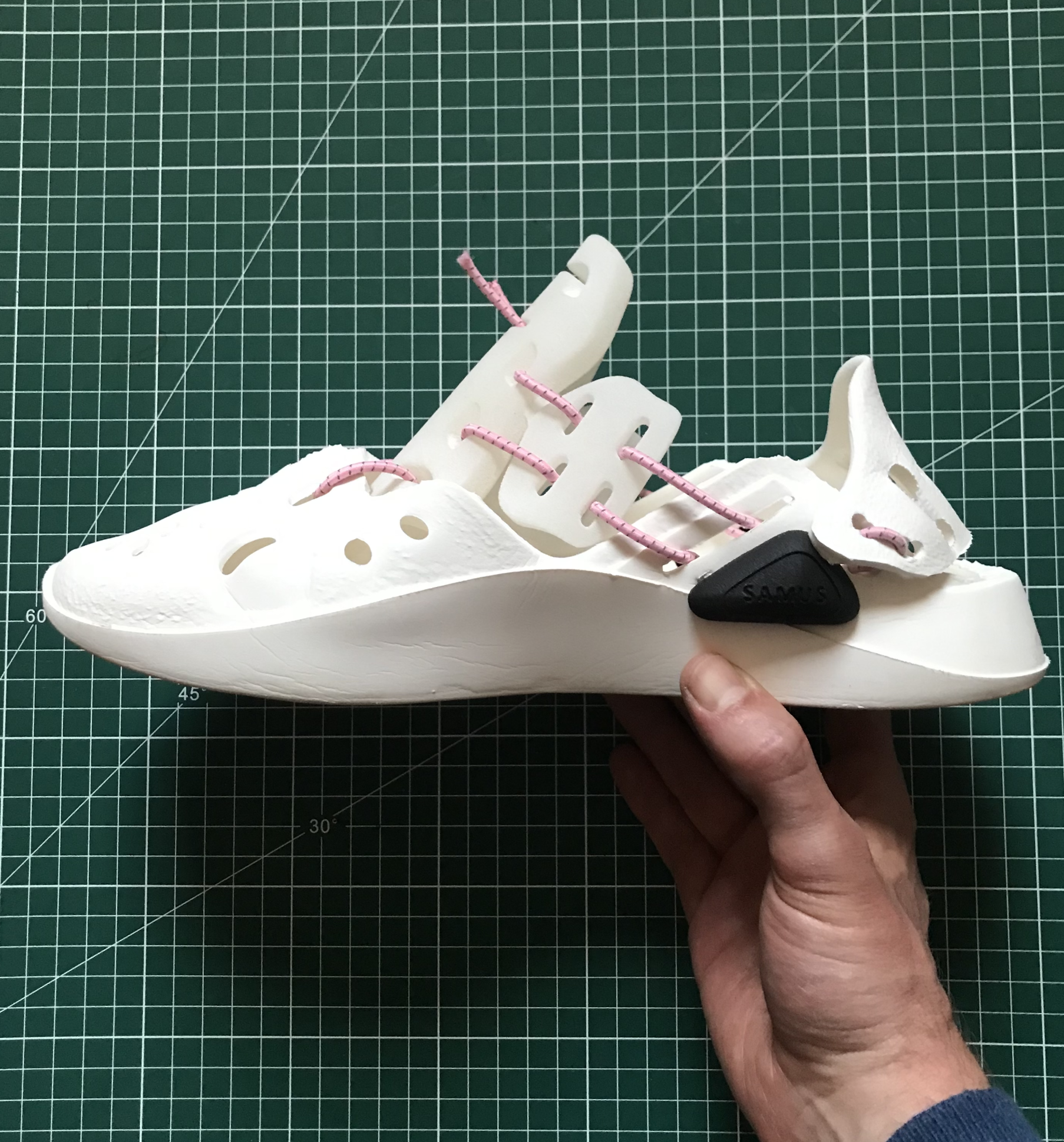Mind Your Step 004: Design For Disassembly
Reframing
End-of-Life
From bio-based to digital-only sneakers, sustainable movements are constantly being made by multi-national conglomerates and small-scale innovators these days. Despite this, the battle to cultivate closed-loop production circuits and overcome issues of footwear's inevitable end of life continues to puzzle the industry and its consumers.
Every year, 300 million pairs of shoes are thrown away and less than 13% of this mass is recycled. Meaning, 261 million pairs of our, so-called, coveted kicks are sent to landfill, where some components are thought to remain intact for 1000 years. Here, we spotlight members of the design community who are working to change, reframe and overturn the footwear waste quagmire.
As more designers within the footwear and apparel arena started to accept the stark consequences of their work, they needed a maxim. Quickly, the vernacular surrounding recycling fell under the three-letter hypernym DfD, or, design for disassembly. Although DfD might seem like the new ecological kid on the block on footwear forums, product designers and architects are veterans of the process. From iPhones to London’s Crystal Palace, designers’ attention to disassembly is intrinsic to the majority of objects that exists around us.
So, why have the products on our feet been left behind?
Zvezdochka by Marc Newson for Nike
“We knew trying to figure out a recycling system for footwear was going to be very difficult,” starts Shahin Rahimifard, Director of Centre for Sustainable Manufacturing and Recycling Technologies (SMART), who has been researching footwear recycling since 2002. He continues: “There is so much variability in not only the materials that are used to make shoes but also the way that shoes are worn and looked after.”
The Centre for SMART is a UK-based hub that is dedicated to developing new strategies and methods to support more ecological and sustainable cross-sector production systems. Through research, advising government and encouraging social change, the team at SMART work to safeguard the future of manufacturing through education. This devotion was palpable as I spoke with Rahimifard, who expelled more knowledge in half an hour than any of my research on ‘DfD’ ever could have.
Having nearly 20 years of industry-leading knowledge under his belt, Rahimfard identified the three areas of footwear disassembly as quickly as I choose synonyms for sibilance in a sentence. Reconfiguration, Repair and Remanufacturing, Recycling. The list’s alliteration was music to my ears.
“For reconfiguration to work, you have to create a fully productive sneaker that people can walk to work in, play sport in and party in whilst also remaining fashionable,” he explains. Hark your mind back to 2004 and you have a modular shoe that ticks all those boxes. Taking inspiration from the sixth Russian dog to go space, Marc Newson – who spent time at the Russian Space Institute – teamed up with Nike to create a futuristic shoe that could easily fit into the NFT portfolios of today’s footwear designers. The shoe was uncharted territory for not only Nike but the industry at large. Made up of the outer cage, an interlocking outsole, an inner sleeve and the insole, the design is wholly interchangeable – allowing the wearer to customise their shoes to terrain and activity.
Nike Considered BB Mid via Playground Store
Nike hit the nail on the head of disassembly again just one year later thanks to its internal think-tank Nike Considered. Lorrie Vogel, former general manager of Considered shares: “We were working during the era when the term closed-loop really started to catch fire,” she says, “We knew from early on that we needed to reduce the amount and variability of materials in our shoes and design them so that they could break apart and be easily recycled.” It was on this burning movement that the Considered Boot took form in 2005. By securing the upper of an ACG-like boot with a shoelace system and utilising stitching to fasten the sole to it, the team had been successful in reducing around 61% of their manufacturing waste, 35% in energy consumption and 89% in solvent use in just one hemp-derived shoe.
“Remanufacturing is always preferential to recycling because you retain the original resources without trying to extract materials”
Shahin Rahimifard
Director of SMART
Nike Considered Boots and Blazer via Playground Store
In two years, Nike unknowingly ticked two of Shahin Rahimifard disassembly processes. And, with projects like Nike Refurbished being launched in April of this year, the brand is unsurprisingly scoring a full house in their Move to Zero. Externally though, Linus Nutland of Nike Server is taking sneaker repair into his own hands and onto his renowned Nike resale Instagram feed. “I had 20 pairs of shoes that I couldn’t sell because they had problems like midsole crumble or separation. If I wanted to re-sole them, I would have to buy 20 donor pairs and take the soles off them, meaning I would still have 20 unwearable pairs,” Nutland explains, saying: “I didn’t think it was good enough, why should there be a never-ending cycle of waste within this process? I needed to find a solution.”
To ward off the waste, Nutland – who is, by the way, still at university – took initiative and visited the Vibram Lab in London. There, the highly skilled team use expert equipment to re-sole Nutland’s Nikes – on top of giving life to broken sneakers, “they retain the waste from the resoling process, hand it back to me and I take the offcuts to Nike Grind so it can be made into other materials.” Not only does Nike Server host some of the rarest Nike models but some can be bought with Vibram’s Enrique, August and Ghiaccio soles. Meaning customers can purchase one of a kind customisations and also revel in the knowledge that the pair’s extended lifecycle is limiting environmental impact.
2004 Nike Storm Beacon with Vibram Ghiaccio Outsole reproduced by Nike Server
Another British designer doing their bit for disassembly via repair takes remanufacturing much more literally. Helen Kirkum set up her studio in 2019, to breathe new life into broken shoes with bricolage. Offering both a personalised – you send her 6 pairs of sneakers, and she returns one – and a made to order service, Kirkum formulates the components of footwear waste into new shoes dripping with authenticity, memories, and genius craft.
Collecting odd shoes from clothing charity Traid, Kirkum’s waste-less, hands-on manufacturing strikes the balance between educational, consequential and aware: “It didn't make sense to make something out of new materials when we have so many products that already exist,” she shares, continuing: “I use the materials as a vessel to communicate wider issues. For me, it's always about challenging people's visions of newness.”
Helen Kirkum’s Combo Soles
I’m sure, that these two industry-overturning designers would be pleased to know that they have the seal of expert approval. Rahimifard says: “Remanufacturing is always preferential to recycling because you retain the original resources without trying to extract materials through recycling which in itself is resource exhaustive.” As if this wasn’t enough Shanel Wu, academic at ATLAS Institute and author of the 2020 paper Unfabricate: Designing smart textiles for disassembly shares the same sentiment. She says: “For disassembly to be part of the future sustainable system we need to stop exporting recycling waste to centralised facilities because exportation emissions are a giant pollution source. Not only because of the technology that is used to process the waste but also the health hazards that some materials pose to humans.”
One developer who has cut both the number of materials and recycling exports to their minimum is French pharmacist Benjamin Camy. Switching the apothecary for product design, Camy is one of the three brains behind Hodei, he says: “The aim of the design was to be able to reuse and recycle each material of a shoe, whilst also achieving functionality.” After clearing the hurdles of trying to find a France-based plastic injection moulding facility as well as an EVA foam manufacturer, Camy spent four years perfecting his 100% foam-based shoe. By adopting a mono-material strategy, the designer has eliminated the resource-intensive sorting that comes with footwear recycling to create a shoe backed by grants, open-source funding and belief in a sustainable future.
Hodei Early Prototype
“I have always been preaching about mono-materiality, and I think that it’s very powerful in the right application,” starts Maxwell Ashford, product designer and researcher behind the cutting-edge footwear concept RUEI-01. He continues: “Until I started this project. Shoes have been multi-material since their inception and these materials have drastically different properties. It’s very difficult to create something that can meet the spec of shoes in mono-materiality.”
RUEI-01 is part of Ashford’s extensive research Fractions that encompasses products from footwear to lampshades. In carrying out his investigation he hopes to highlight the sustainable and environmental possibilities that reduce planetary and human impacts of consumption. That’s why he has turned to data-driven robots to solve the multi-faceted problem of multi-material disassembly.
“When everything is in place, the RUEI-01 robot-built shoe would be returned to its producer and all of the information about that shoe would be embedded into it with a QR code, including the robotic instructions to take it apart. This would allow an assembled shoe to be disassembled in the exact way that a designer wants it to be. Meaning the separated materials can be fed straight back into processing,” Maxwell explains, saying: “The beauty of embedding all of this information into something that can then be automatically understood is that you still have the potential to create designed objects that are completely recyclable.”
Robots? Automation? Embedded code? There might be some question marks flying around the brain now. But, Ashford encourages all footwear designers to engage with the possibilities of his findings: “I was trying to do a proof of concept with limited recourses, limited time and limited finance. I can now say, I've done this in a short time with little money. So, I would say that any designer is capable of it if they're open and excited about the future and they’re not seeing it as this strenuous arduous task of having to work out how to do things differently.”
When it comes to footwear recycling, it’s clear that the designers aren’t the only ones who need to open their ears to doing things differently. It goes without saying that until consumer’s habits and expectations change for the better, recycling will remain commercially unviable. That said, change can also be catalysed by the implementation levies and incentives for designers, recyclers and end-of-life experts who are propelling this sector forwards. Lorrie Vogel, who is now founder of sustainability and innovation consultancy ImagineNOW says: “If a company removes materials from society in a way that that society can never use them again, they should pay an end-of-life tax whereas companies reverting this should reap the benefits. The incentives are not in the right places to drive new materials and new industries.”
Whether you back mono or multi, repair or recycle, the world of footwear DfD is as multi-faceted as the product it’s behind. So too are the people involved in the process – from designers to consumers, it’s up to you to decide where the recycling responsibility lies. One palpable thing is that our habits must change quickly for the future of our industry. Let’s revert from landfill and value our shoe’s end-of-life as much as we do their existence.

